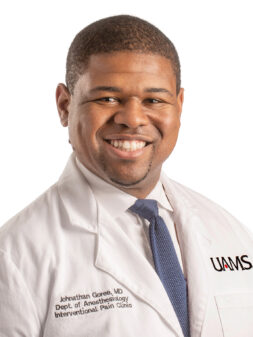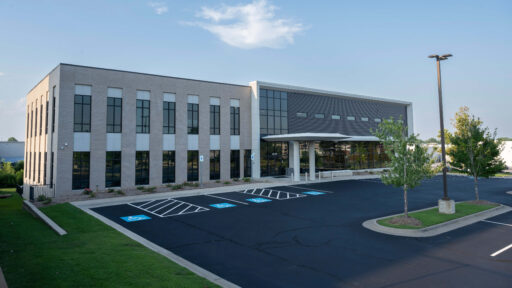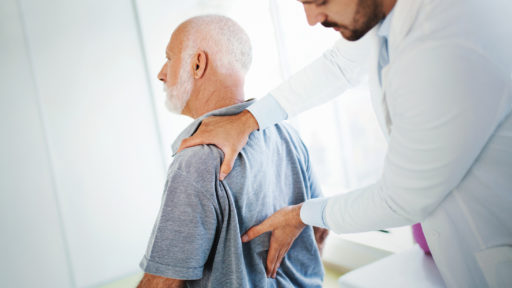Also called: Neuropathic Pain; Nerve Pain
Pain is a signal in your nervous system that something may be wrong. It is an unpleasant feeling, such as a prick, tingle, sting, burn, or ache. Pain may be sharp or dull. It may come and go, or it may be constant. You may feel pain in one area of your body, such as your back, abdomen, chest, pelvis, or you may feel pain all over.
Pain can be helpful in diagnosing a problem. If you never felt pain, you might seriously hurt yourself without knowing it, or you might not realize you have a medical problem that needs treatment.
There are two types of pain: acute and chronic. Acute pain usually comes on suddenly, because of a disease, injury, or inflammation. It can often be diagnosed and treated. It usually goes away, though sometimes it can turn into chronic pain. Chronic pain lasts for a long time, and can cause severe problems.
Pain is not always curable, but there are many ways to treat it. Treatment depends on the cause and type of pain. There are drug treatments, including pain relievers. There are also non-drug treatments, such as acupuncture, physical therapy, and sometimes surgery.
NIH: National Institute of Neurological Disorders and Stroke
Courtesy of MedlinePlus from the National Library of Medicine.
Syndicated Content Details:
Source URL: https://medlineplus.gov/pain.html?utm_source=mplusconnect&utm_medium=service
Source Agency: National Library of Medicine
Peripheral Nerve Disorders
What are peripheral nerves?
Nerves are like wires that carry messages back and forth between your brain and your body. Your peripheral nerves branch off from your brain and spinal cord and connect to all parts of your body, including your muscles and organs. Peripheral nerves carry messages from your brain that control your movement, breathing, heartbeat, digestion, and more. They also carry messages from your body to your brain, so you can feel things, such as pain, heat, and cold.
What are peripheral nerve disorders?
Peripheral nerve disorders happen when one or more peripheral nerves are damaged. Damaged nerves may not carry messages correctly, or they may not work at all. As a result, you may have pain, trouble walking, or a variety of other problems, depending on which nerves are involved.
Peripheral nerve disorders are very common. There are more than 100 different types.
What causes peripheral nerve disorders?
Many things can damage nerves and lead to peripheral nerve disorders:
- Diabetes is the most common cause of peripheral nerve disorders. Most people with diabetes will develop diabetic nerve problems.
- Physical injury (trauma) that stretches, crushes, squeezes, cuts, or puts pressure on one or more nerves. Some examples of peripheral nerve disorders from physical injury include complex regional pain syndrome and brachial plexus injuries.
- Health conditions, including:
- Certain cancers and their treatment (chemotherapy and radiation therapy).
- Infections, such as HIV and Lyme disease.
- Problems with blood or blood vessels.
- Autoimmune diseases, such as rheumatoid arthritis and lupus.
- Kidney or liver disease.
- Certain medicines.
- Contact with certain toxic substances, such as lead or mercury.
- Alcohol use disorder (AUD) and smoking.
- Vitamin imbalances, especially a lack of vitamin B12.
- Your genes, including changes in your genes or conditions that you inherit from your parents, such as Charcot-Marie-Tooth disease.
In certain cases, the cause of peripheral nerve disorder is not known.
What are the symptoms of peripheral nerve disorders?
The symptoms of peripheral nerve disorders depend on which nerves are affected, what is causing the damage, and how serious it is:
| Types of nerves | Possible symptoms of nerve damage |
|---|---|
| Motor nerves control your muscles and all your movement, such as walking, talking, and using your hands. |
|
| Sensory nerves carry messages to your brain from your senses, including touch, hot and cold, and pain. |
|
| Autonomic nerves send messages to your organs to control breathing, digestion, and other body functions that happen without thinking about them. |
|
Symptoms may range from mild to very strong. They may develop quickly over days or slowly over months and years. But they are rarely life-threatening.
How are peripheral nerve disorders diagnosed?
To find out if you have a peripheral nerve disorder, your provider will:
- Ask about your medical history
- Ask about your family health history
- Do a physical exam
- Order tests, which may include:
- Blood tests
- Genetic tests
- Nerve tests that measure:
- A biopsy of nerve or skin tissue
- CT or MRI scan to see what may be pressing on your nerves
What are the treatments for peripheral nerve disorders?
It's important to treat any conditions that are causing nerve damage. In certain cases, that will allow your nerves to heal over time.
Treatment for symptoms depends on the type of peripheral nerve disorder you have, where it is, and how severe. Treatment options include:
- Braces or splints
- Over-the-counter patches and skin creams
- Prescription medicines
- Non-drug pain management, such as electrical stimulation or relaxation therapy
- Surgery to relieve pressure on a nerve
Can peripheral nerve disorders be prevented?
You can help prevent peripheral nerve disorders by:
- Managing health conditions that may cause nerve damage, especially diabetes
- Preventing falls and accidents
- Avoiding toxic substances
- Being careful to avoid repeated motions and body positions that press on your nerves
- Eating a balanced diet, exercising, limiting alcohol, and not smoking
NIH: National Institute of Neurological Disorders and Stroke
Courtesy of MedlinePlus from the National Library of Medicine.
Syndicated Content Details:
Source URL: https://medlineplus.gov/peripheralnervedisorders.html?utm_source=mplusconnect&utm_medium=service
Source Agency: National Library of Medicine



